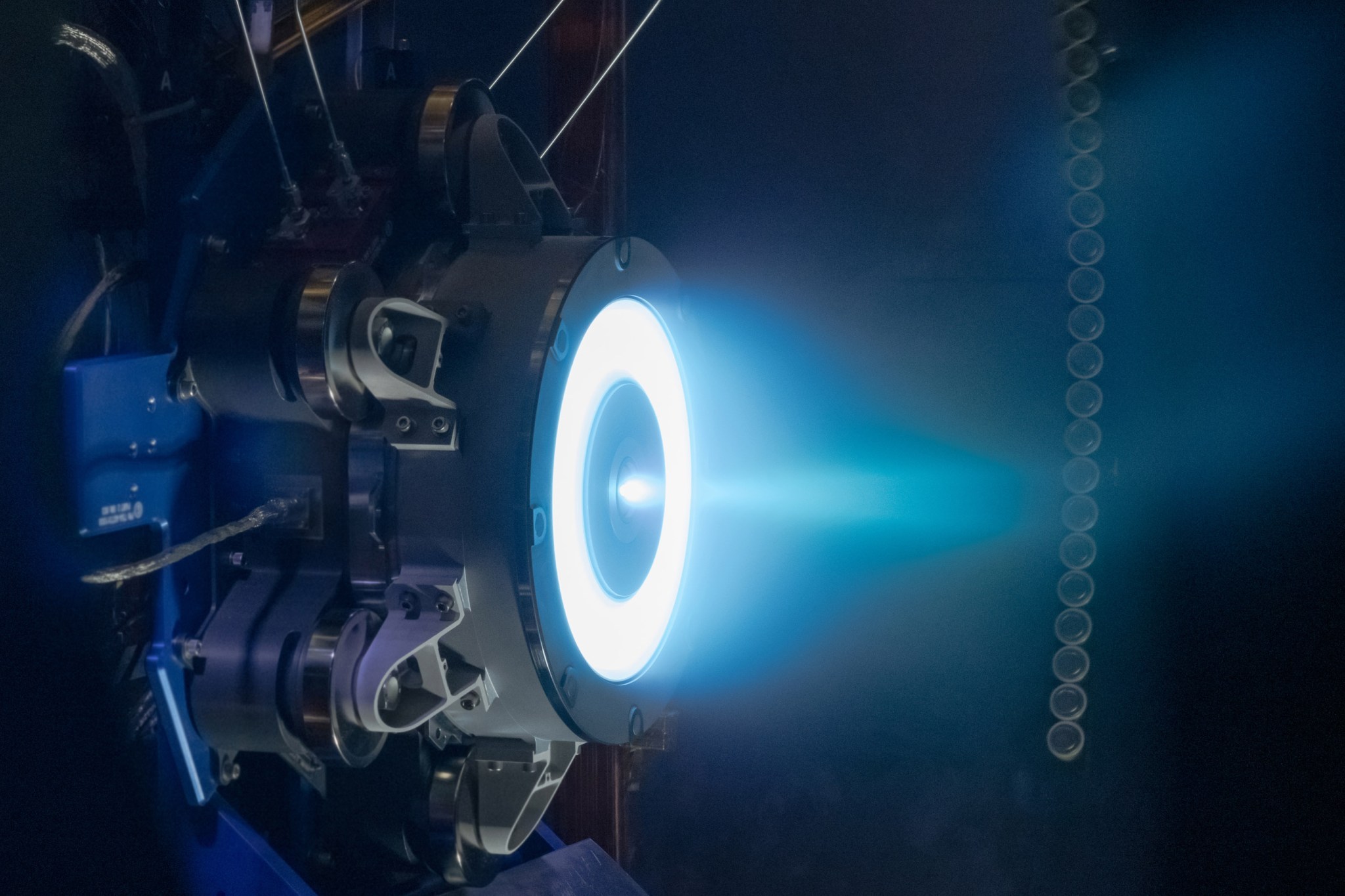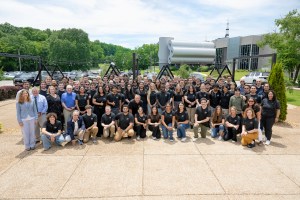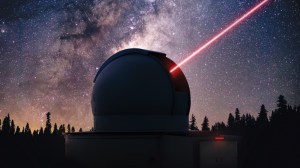The blue hue of the Advanced Electric Propulsion System (AEPS) is seen inside a vacuum chamber at NASA’s Glenn Research Center in Cleveland during recent thruster qualification testing. This 12-kilowatt Hall thruster is the most powerful electric propulsion thruster in production, and it will be critical to future science and exploration missions at the Moon and beyond.
The blue plume is a steady stream of ionized xenon gas ejected to produce low, highly efficient thrust. These electric propulsion systems accelerate spacecraft to extremely high speeds over time using only a fraction of the fuel chemical propulsion systems require, making electric propulsion an excellent choice for deep-space exploration and science missions.
Three AEPS thrusters will be mounted on the Power and Propulsion Element, a foundational component of Gateway. The small lunar space station is critical to the agency’s Artemis missions that will help prepare for human missions to Mars. The Power and Propulsion Element will provide Gateway with power, high-rate communications, and allow it to maintain its unique orbit around the Moon.
The AEPS thruster recently returned to NASA Glenn to continue qualification testing to certify the thrusters for flight.
The Solar Electric Propulsion project is led at NASA Glenn and managed by NASA’s Technology Demonstration Missions program under the agency’s Space Technology Mission Directorate, which oversees a portfolio of technology demonstration projects across NASA centers and American industry partners.



























